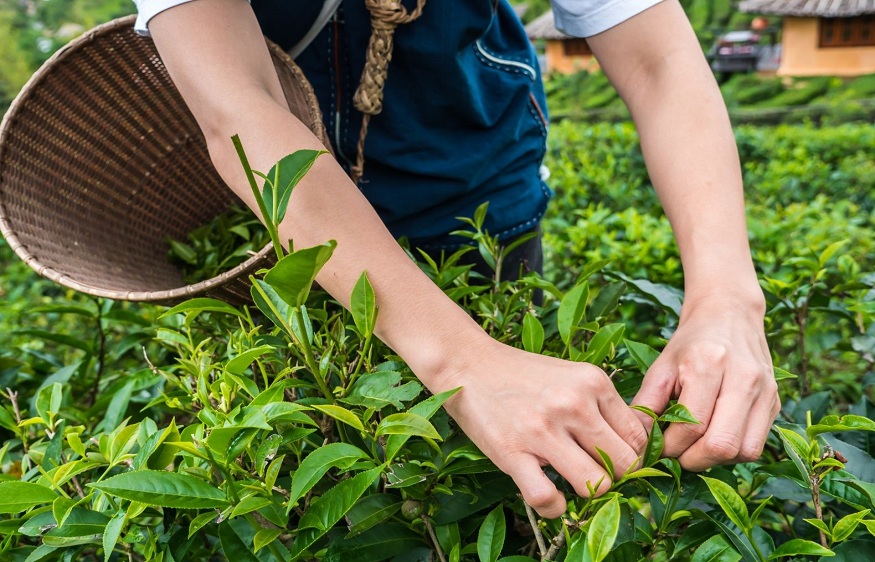Two-thirds of French people drink tea .
You may even be savoring it while reading this article. For some, it is part of their daily ritual. But what would you say if I told you that your favorite drink sometimes comes from plantations that are not ecological ? Some NGOs are questioning the way tea is grown . Especially since the main producing countries are not known for being examples in terms of the environment. Should we then stop drinking tea? Is conventional tea good for the environment ? Should we favor organic tea ?
25,000 cups of tea are consumed every second , or 2.16 billion cups per day (the second most popular drink in the world after water)
It is drunk in all four corners of the planet. But four countries share the bulk of the production (nearly 80%): China, India, Sri Lanka, Kenya. How can we explain such success? Surely its taste, which makes more than one travel. Tea is also known for its medical virtues. Indeed, studies have shown that daily consumption reduces the risk of cardiovascular diseases. It also acts in the prevention of diabetes and obesity. Moreover, green tea is particularly renowned for its therapeutic benefits.
If you are a regular reader of this blog, you know that intensive agriculture is one of the causes of deforestation. Palm oil production is the perfect example. However, tea growing is not bad in itself (just like palm oil). According to a study by Nigel Melican
a recognized expert in the field, this plantation would be completely ecological, since its carbon impact would be potentially negative. This does not mean that tea gardens are harmless to the environment. The popularity and excessive demand of the industry have contributed to the multiplication of tea plantations, to the detriment of our forests.
Deforestation is also a problem in the northeast of India (the second largest producer). The Assam region is known for its different reliefs as well as for the richness of its fauna and flora. This is why this area is considered one of the biodiversity hotspots in India
Unfortunately, its natural habitats are transformed into expanses of tea monocultures. An entire ecosystem is being put in danger. Yes, because Assam alone produces almost half of India’s tea and supplies famous British brands. Today, the authorities are finally beginning to become aware of the ecological risks of intensive tea cultivation . Indeed, a study by the Indian government has confirmed that tea gardens are contributing to the deforestation of the region. Accusations rejected by the Indian Tea Association, which represents almost all the major tea companies in Assam. Their argument? Forest cover is in the interest of its members. A speech that can be heard.
However, some environmentalists say it is difficult to deny the importance of the development of tea plantations (some of which are illegal, because they are not registered) in the disappearance of thousands of hectares of forest. A loss of habitat that threatens the lives of other living beings.
In front of the tea plantations, the life of certain species in danger
In Assam, it’s not just the trees that are under threat. Deforestation for tea plantations is disrupting the lives of animals too. Areas that were once a combination of forests and grasslands were home to tigers and rhinos. Today, these places have been converted into tea fields. Even elephants are being harmed by the world’s second most consumed beverage. Some elephants are getting trapped in ditches, or worse, electrocuted by fences. The recent surge in elephant deaths has become such a problem that it has reached Assam’s Chief Minister Sarbananda Sonowal. Indeed, India is home to nearly 60% of Asia’s elephants, so their lives are of paramount importance. Far smaller, but equally important, are the gorillas that live in Uganda’s Bwindi Impenetrable Forest. Hundreds of monkeys thrive, protected within the National Park. According to the website www.sauvonslaforet.org : “[…] the conversion of the neighboring Kafuga forest into tea plantations would be a game changer according to local ecologists. This forest area, a true natural paradise, serves as a buffer to the National Park and its disappearance could threaten the gorillas.”


